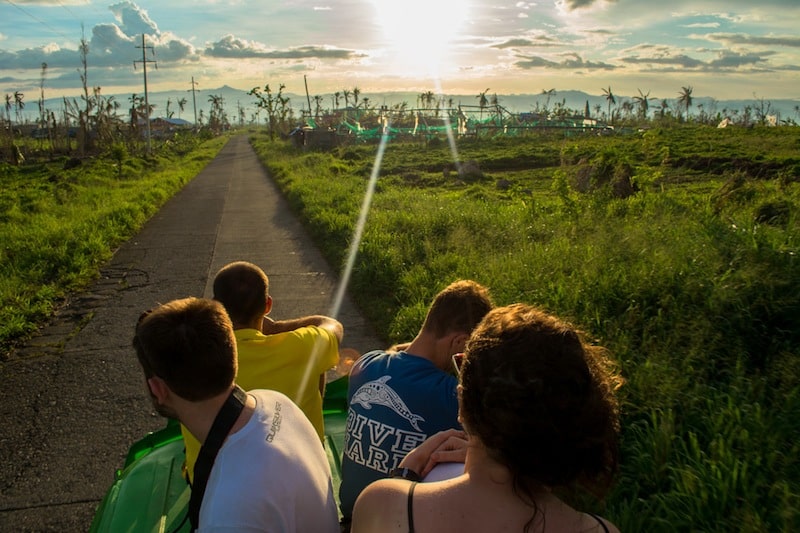I wake up without an alarm. Unpeeling my sweaty shirt from my skin, I sit up on my mat. My sleeping space is directly in the middle of the giant hotel ballroom I call home with 40 other disaster relief volunteers. This makes me the least likely target for the mosquitos that attack from the windows every evening, but the furthest from the fans. Seeing the itchy, red welts on the others, I decide sleeping in sweat is definitely the lesser of of two evils.
By 6:30 am, most people are in the corridor, making breakfast from a box of bread, jams, and fruit. I grab a seat at one of the plastic folding tables and devour a slice of peanut butter toast and washed down with sugary instant coffee. Fifteen minutes later, we meet in our teams and load supplies into the trucks. Volunteers pile in the back, wheelbarrows are tied to the roof, and a clattering of hard hats, sledge hammers, and tool boxes rock around our feet as we pull out into the city.
We pass burning trash, wind-torn buildings, and, despite it all, the always smiling faces of a city of people unwilling to let the strongest tropical storm in history pull them under.
For almost two weeks, this was my morning ritual as a disaster relief volunteer in the Philippines.
Typhoon Haiyan smashed into the country on November 7, 2013, killing more than 6000 people and leaving half a million displaced. Shortly after, I canceled my plans to sightsee in Cambodia and signed up to volunteer in the Philippines.
I worked with an organization called All Hands, based in the city of Ormoc in the hardest hit region of the country. All Hands specializes in coordinating volunteer deconstruction efforts in disaster zones – cleaning up debris, pulling down wrecked houses, and salvaging materials for rebuilding later.
I’d never been to a disaster zone, and I’d definitely never wielded a sledgehammer, so I had no idea what to expect from the experience. But it turned out to be one of the single most perfect things I’ve ever done.
Every day we were sent out in groups into different parts of the city to do anything from clean up school yards to tear down dangerous walls to clean up piles of rotting trash. The constant smiles and warmth from people in Ormoc made it easy to forget I was in a disaster zone.
People came to us crying with relief and thanking us for our help. But, I never encountered someone who seemed angry or despondent, despite being the victim of a disaster that had robbed them of their home, job, and stability. Their single goal seemed to be to rebuild their lives as quickly as possible, and remain unflappably positive while doing it.
I was honored to be a part of that, even if only in a small way.
























